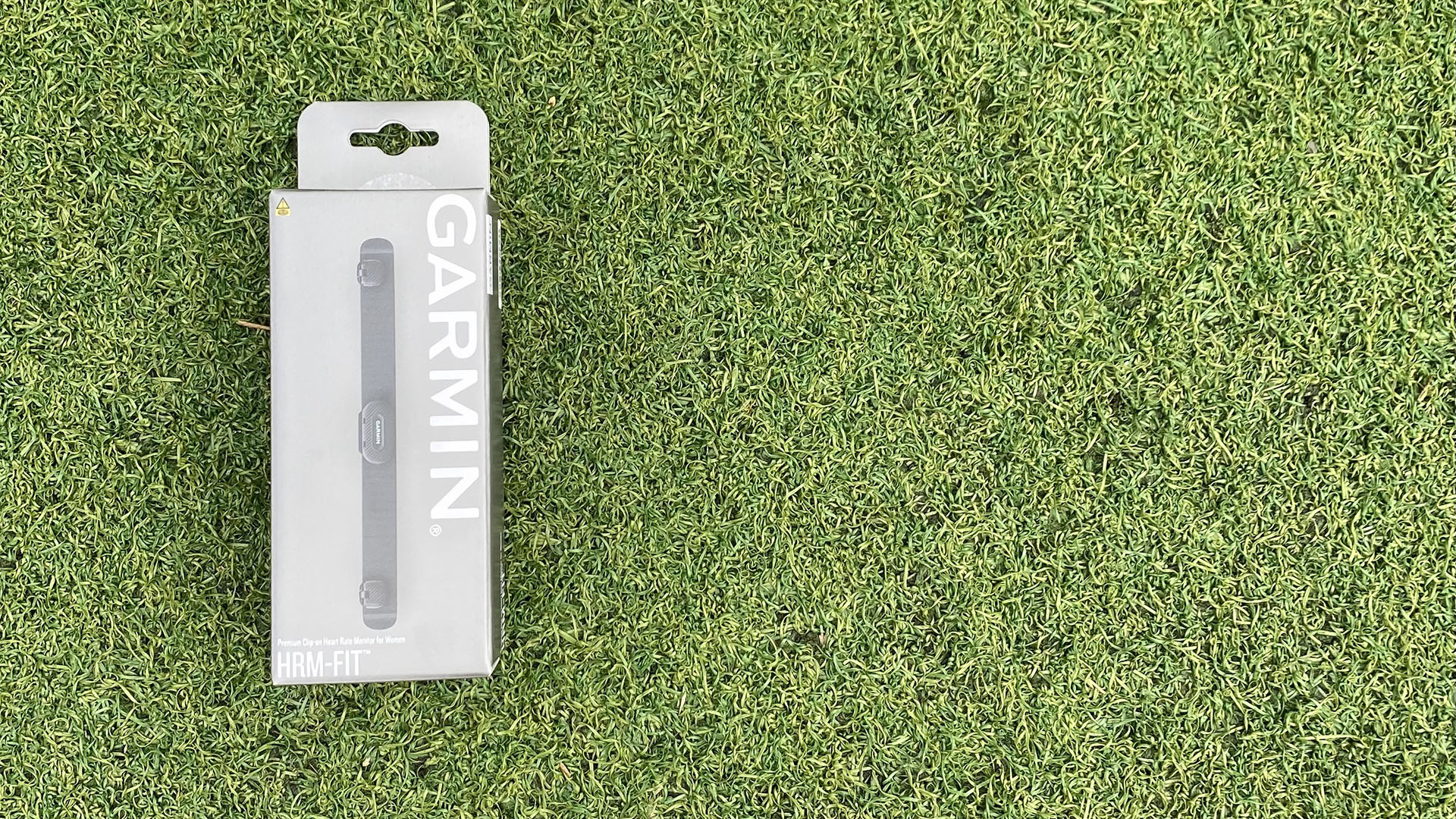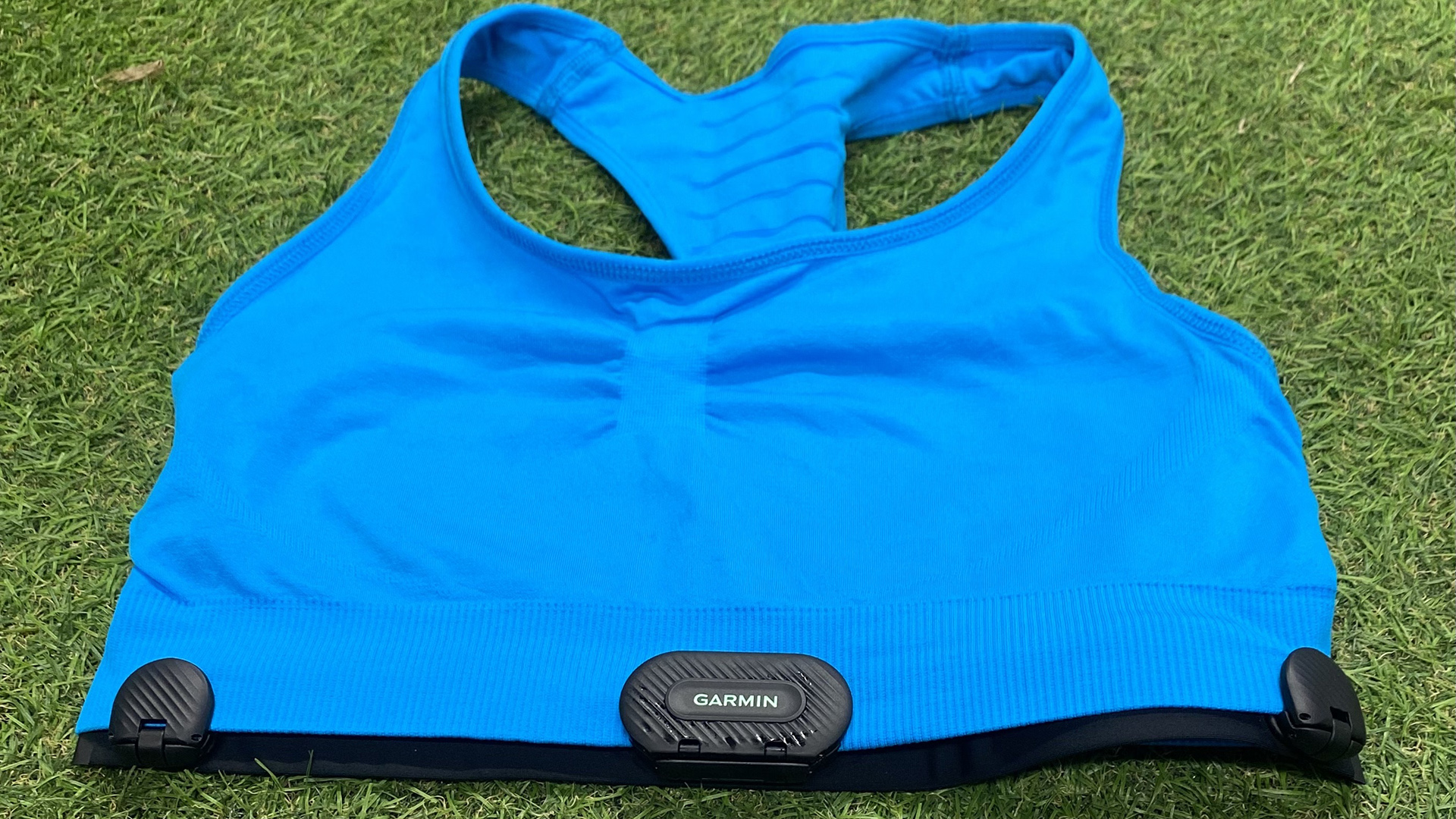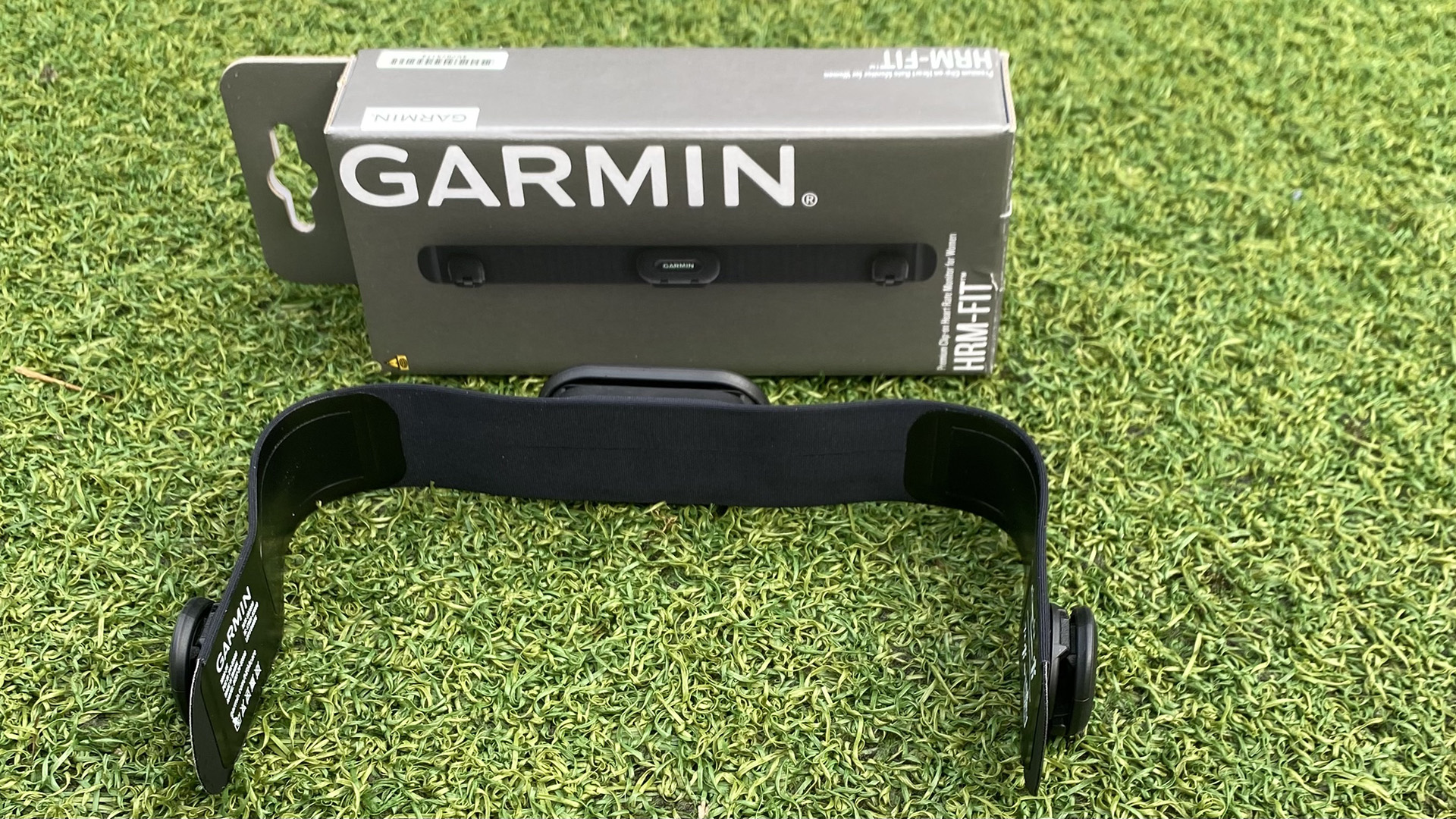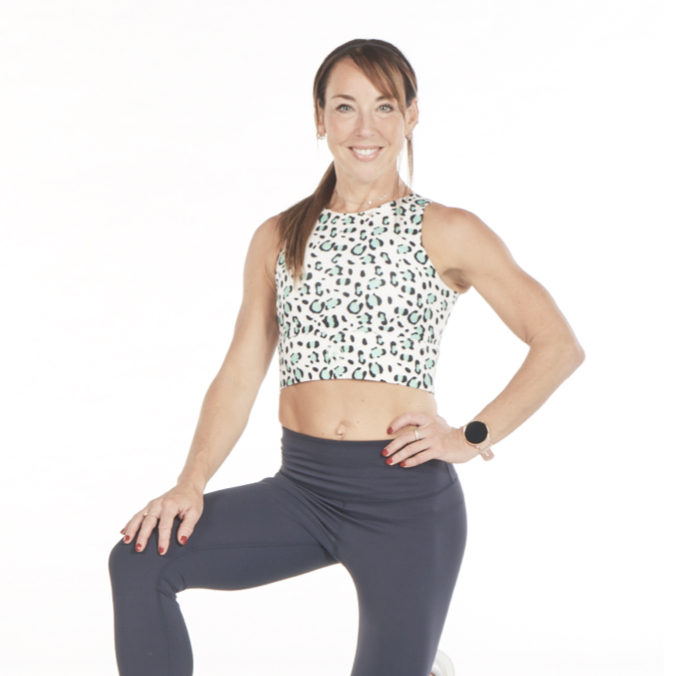Garmin HRM-Fit review: Clip it on and capture
The Garmin HRM-Fit is a comfortable and accurate heart rate monitoring solution for female athletes


Designed and purpose-built for women, the Garmin HRM-Fit is a clever heart rate strap that gives you all the workout data you need. It’s easy to use and comfortable to wear; it even collects advanced running stats like whether you’re over-striding, your step turnover is too slow and how long each foot is in contact with the ground.
-
+
Easy to sync to the Garmin Connect app - you don’t necessarily need a compatible smartwatch
-
+
Attaches to most sports bras
-
+
One-year battery life
-
-
More expensive than other heart rate monitors on the market
-
-
Visible under tight gym/running tees
-
-
You can’t use it for swimming
Why you can trust T3

When training, there’s seriously nothing worse than looking down at your watch and seeing an erratic heart rate reading. This usually means that your watch has lost all contact with your chest strap and either your bra has interrupted with the sensors - or the strap has slid halfway down your torso. The struggle is real. So what do we do? Stop and readjust? Or accept the fact that our data will be skewwhiff and hope for the best during your next workout.
Thankfully Garmin has understood this struggle and tried to resolve this problem with their new HRM-Fit heart rate monitor, which has been designed to clip onto your sports bra so it’s not only secure and comfortable but also accurate as it neatly integrates with your sports watch and the Connect app.
But how does it compare to some of the other heart rate monitors on the market, and why would you invest in this over a cheaper heart rate monitor like the Polar H10 or the Myzone MZ-Switch?
Garmin HRM-Fit review
Price and availability
Garmin launched this female-inspired HRM-Fit heart rate monitor in January 2024, and it’s now widely available at Garmin US, Garmin UKand Garmin AU. The HRM-Fit heart rate monitor costs $150/ £140/ AU$ 249.
The monitor itself has a battery life of a year and connects with most newer Garmin sports watches — including the vívoactive 5 and Garmin Forerunner 265.
For this test, I connected the Garmin HRM-Fit with my Garmin vívoactive 5, but if you don’t have a Garmin watch, it’s not an issue. You can also use it alongside the Garmin Connect app (free on Android and iOS), where you can view your heart rate data. You can also use the HRM-Fit chest strap with Zwift or Strava or other equipment, such as the Peloton exercise bike or the treadmill in your gym. Just look for the ANT+® or Bluetooth® technology to make sure it’s compatible.
Features

Rather than wrap the strap around your chest and have to adjust your sports bra so it sits securely (hopefully) over the strap, Garmin has designed the new HRM-Fit to work with your sports bra, rather than against it.
Get all the latest news, reviews, deals and buying guides on gorgeous tech, home and active products from the T3 experts
When popping this on, Garmin states (rather specifically) that it needs to be placed on a medium or high-support sports bra. This is mainly to ensure that things stay put, namely the strap. For those not familiar with sports bra support, low-support sports bras are designed for low-impact activities like yoga and Pilates, whereas the more you move, the more support you tend to need - which is where a medium and high-support sports bra comes in.
In the same way that the goal of a supportive sports bra is generally to minimize movement of your chest, that’s also true for the HRM-FIT. With heart rate monitors, movement is bad news. When things move, metrics might mistake that movement for a different heart rate level, which is why the HRM-FIT actually snaps onto your sports bra - and stays there.
Setup
At first glance, you’ll notice three snaps on the strap. Two outer ones, and then a center one over the pod. The three snap clips on the Garmin HRM-Fit allow you to securely fasten the strap to your bra, with the sensors sitting perfectly in place on the skin.
I found it easiest to attach the middle clip first, then to work your way out to the two side ones, to ensure the monitor is lying flat. It was also easier to set it all up whilst wearing the sports bra. At least then the bra is in place and you clip it all on and readjust as you need.
When all clipped on, you’ll notice that the centre pod, sticks out slightly (beware when lying on your front and performing exercises like the cobra, or Superman Prone - you will feel it!), this is the battery compartment.
The design follows a simple coin-cell battery compartment that can be unlocked with a coin or flat-head screwdriver. The device takes a round CR2032 battery, which Garmin claims will last around a year. And the battery status can be viewed easily on your Garmin Connect app.
Build quality and ergonomics

The first thing to know about the HRM-FIT is that, yes, it’s got the foundations of a regular chest strap in terms of connectivity. That means it’s going to transmit on both ANT+ & via Bluetooth. But beyond that, it’s not a regular chest strap in the slightest - and instead got some of the more fancy features like capturing your running metrics, think cadence, and stride length, which can also be seen on other higher-end Garmin chest straps like the HRM-Pro Plus.
To pair it to any Garmin watch or app, you’ll need to search in the sensors menu. If on a Garmin watch, like the vívoactive 5, you’ll see it listed under the sensors pairing menu as a chest strap. The same for apps like Strava, Zwift or on your Peloton Bike or Treadmill again, you’ll see it listed in the sensors menu.
Once paired, you’ll see your heart rate on your selected device - or devices; it’s worth noting that the HRM-Fit can connect to two Bluetooth devices at once, so you can connect it to both your smartwatch and your chosen compatible piece of fitness equipment.
During my testing, I found the results of the HRM-Fit to be pretty spot on - and what I like is that even if you aren’t wearing a watch, the strap gathers all your general activity stats as well as your training and steps. If you would never consider doing any kind of workout without your watch - or you’re prone to losing charge, then this would be a worthwhile investment. No workout is lost - or wasted.
All of this data is also available on the watch or the Connect app in real-time, and then depending on which device/platform or app you’re using, you can see it afterwards recorded with all your vital stats with your steps, calories, and intensity minutes recorded too.
Fit and comfort
Technical bits aside, the main benefit of this strap is that it feels less restrictive than a traditional chest strap. Too tight or too loose no longer exists. The monitor itself weighs 53g/1.8 ounces, so it’s not that noticeable once it’s in place.
A few minutes into my workout, although I feel like it’s not on properly (purely down to the fact that I usually wear a chest strap pulled fairly tight and firmly wedged under a very fitted sports bra), my heart rate is still steady and being recorded. By the end of my workout, which included some pretty intense treadmill sprints and plyometrics, the strap still hadn’t moved an inch.
Fast forward to a few more runs and workouts, and I’ll be honest, I still feel it there but don’t pay much attention to the chest strap.
The only thing I do pay attention to, though, is the extra bumps of the design - mainly the battery compartment, which is prominent and sticks out on some of my favourite well-fitted gym tanks - especially the lighter-coloured ones.
It’s also worth noting that, unlike other heart rate monitors, you can’t wear the HRM-Fit for swimming — it only has a water resistance rating of 3ATM, which means it’s fine for sweat and rain showers but shouldn’t be submerged in water. Instead, Garmin recommends the HRM-Pro heart rate monitor - or you could try the Polar H10 for recording your lengths.
Verdict

Simply put, the Garmin HRM-Fit is going to give you more accurate heart rate and performance data over wrist-based wearables, as well as some of the more traditional wrap-around chest straps, making it essential for female athletes who don’t want to worry about discomfort, chafing and unreliable readings. It might also appeal to those athletes who can’t wear a watch during certain sports, such as team sports and martial arts, yet still want to track their stats.
The strap easily fits onto your sports bra and won’t budge during exercise. It was also super reliable and added a new element of accuracy to my workouts - especially my running efficiency. Granted, not everyone will want to falke out on such a fancy chest strap — and the HRM Fit is an especially expensive piece of kit, especially when most Garmin watches can already record a lot of your workout metrics - but when it comes to motivation and taking your workouts seriously, there’s nothing better than listening to your heart and working with the main source.
Also consider
If you want reliable running data and heart rate readings but are not a fan of a huge price tag, then invest in the cheaper Garmin HRM-Run or, cheaper still, the Frontier X, which comes in at half the price. Granted, they don’t attach to your bra - but if you get the right fit and positioning from the get-go, it shouldn't budge or feel uncomfortable.
In conclusion, the HRM-Fit is most definitely a luxury solution for those who rely on a chest strap and for those who are serious about their stats yet simply don’t want any chest strap faff. I’m sold. My training has reached new heights since wearing it, and you won’t see me pounding the pavements without this.

Lucy Miller is a journalist, Level 3 Personal Trainer, Nutritional Advisor and Children’s Fitness Specialist. She holds fitness qualifications from NASM Training and Premier Training International and has been a fitness journalist and fitness (and cover) model for over 20 years. Since going freelance in 2014, Lucy left Men’s Fitness Magazine to write for an abundance of top consumer titles such as Women’s Health, Women’s Fitness, Waitrose, The Times, The Guardian and Runners World.
She’s also extremely passionate when it comes to educating others about health and physical activity and loves inspiring and working with children and adults to help make fitness fun, sustainable and accessible. In her spare time, Lucy is ever the sportswoman. Once a national gymnast, having won three national titles, she has also run a handful of marathons around the world and loves to test her physical and mental side with daily running and gym sessions, not to mention ballet, bootcamp, boxing and TRX.